Related Research Articles

The 1996 United States presidential election was the 53rd quadrennial presidential election,held on Tuesday,November 5,1996. Incumbent Democratic President Bill Clinton defeated former Senate Majority Leader Bob Dole,the Republican nominee,and Ross Perot,the Reform Party nominee and 1992 Independent presidential candidate.
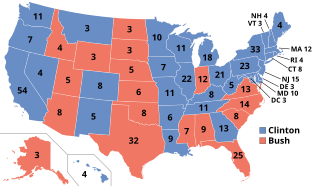
The 1992 United States presidential election was the 52nd quadrennial presidential election,held on Tuesday,November 3,1992. Democratic Governor Bill Clinton of Arkansas defeated incumbent Republican President George H. W. Bush and independent businessman Ross Perot of Texas. The election marked the end of a period of Republican dominance in American presidential politics that began in 1968,and also marked the end of 12 years of Republican rule of the White House,as well as the end of the Greatest Generation's 32-year American rule and the beginning of the baby boomers' 28-year dominance until 2020. It was the last time the incumbent president failed to win a second term until Donald Trump in 2020.

The 1968 United States presidential election was the 46th quadrennial presidential election,held on Tuesday,November 5,1968. The Republican nominee,former vice president Richard Nixon,defeated both the Democratic nominee,incumbent vice president Hubert Humphrey,and the American Independent Party nominee,former Alabama governor George Wallace.

The 1972 United States presidential election was the 47th quadrennial presidential election held on Tuesday,November 7,1972. Incumbent Republican president Richard Nixon defeated Democratic U.S. senator George McGovern in a landslide victory. With 60.7% of the popular vote,Richard Nixon won the largest share of the popular vote for the Republican Party in any presidential election.
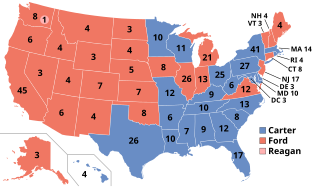
The 1976 United States presidential election was the 48th quadrennial presidential election,held on Tuesday,November 2,1976. Democrat Jimmy Carter,former Governor of Georgia,defeated incumbent Republican president Gerald Ford in a narrow victory. This was the first presidential election since 1932 in which the incumbent was defeated,as well as the only Democratic victory of the six presidential elections between 1968 and 1988.

The 1980 United States presidential election was the 49th quadrennial presidential election,held on November 4,1980. The Republican nominee,former California governor Ronald Reagan,defeated incumbent Democratic President Jimmy Carter in a landslide victory.

The 1992 United Kingdom general election was held on Thursday 9 April 1992,to elect 651 members to the House of Commons. The governing Conservative Party led by the prime minister John Major won majority of 21,and would be the last time that the Conservatives would win an overall majority at a general election until 2015. It was also the last general election to be held on a day which did not coincide with any local elections until 2017. This election result took many by surprise,as opinion polling leading up to the election day had shown a narrow but consistent lead for the Labour Party under leader Neil Kinnock during a period of recession and declining living standards.

General elections were held in India in four phases between 20 April and 10 May 2004. Over 670 million people were eligible to vote,electing 543 members of the 14th Lok Sabha. Seven states also held assembly elections to elect state governments. They were the first elections fully carried out with electronic voting machines.
An electoral swing analysis shows the extent of change in voter support,typically from one election to another,expressed as a positive or negative percentage. A multi-party swing is an indicator of a change in the electorate's preference between candidates or parties,often between major parties in a two-party system. A swing can be calculated for the electorate as a whole,for a given electoral district or for a particular demographic.

The 2005 United Kingdom general election was held on Thursday 5 May 2005,to elect 646 members to the House of Commons. The governing Labour Party led by the prime minister Tony Blair won its third consecutive victory,with Blair becoming the second Labour leader after Harold Wilson to form three majority governments. However,its majority fell to 66 seats;the majority it won four years earlier had been of 167 seats.

The 2010 United Kingdom general election was held on Thursday 6 May 2010,to elect Members of Parliament to the House of Commons. The election took place in 650 constituencies across the United Kingdom under the first-past-the-post system. The election resulted in a large swing to the opposition Conservative Party led by David Cameron similar to that seen in 1979,the last time a Conservative opposition had ousted a Labour government. The governing Labour Party led by the prime minister Gordon Brown lost the 66-seat majority it had previously enjoyed,but no party achieved the 326 seats needed for a majority. The Conservatives won the most votes and seats,but still fell 20 seats short. This resulted in a hung parliament where no party was able to command a majority in the House of Commons. This was only the second general election since the Second World War to return a hung parliament,the first being the February 1974 election. This election marked the start of Conservative government for the next 14 years.
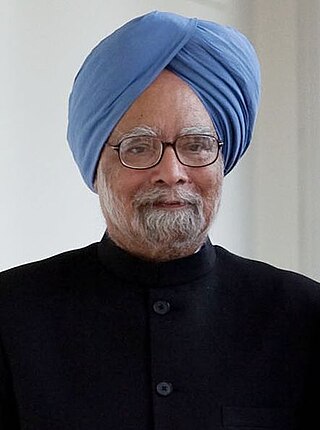
General elections were held in India in five phases between 16 April 2009 and 13 May 2009 to elect the members of the fifteenth Lok Sabha. With an electorate of 716 million,it was the largest democratic election in the world until being surpassed by the 2014 general election.
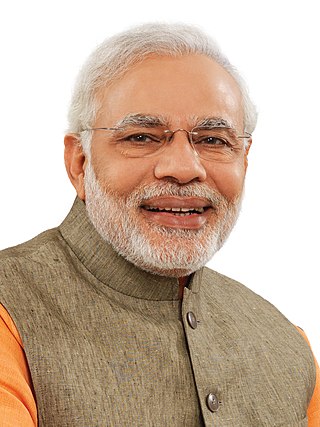
General elections were held in India in nine phases from 7 April to 12 May 2014 to elect the members of the 16th Lok Sabha. With 834 million registered voters,they were the largest-ever elections in the world until being surpassed by the 2019 election. Around 23.1 million or 2.71% of the total eligible voters were aged 18–19 years. A total of 8,251 candidates contested the 543 elected Lok Sabha seats. The average election turnout over all nine phases was around 66.40%,the highest ever in the history of Indian general elections until 2019 election.

The Tea Party movement was an American fiscally conservative political movement within the Republican Party that began in 2009. The movement formed in opposition to the policies of Democratic President Barack Obama and was a major factor in the 2010 wave election in which Republicans gained 63 House seats and took control of the U.S. House of Representatives.

General elections were held in India in seven phases from 11 April to 19 May 2019 to elect the members of the 17th Lok Sabha. Votes were counted and the result was declared on 23 May. Around 912 million people were eligible to vote,and voter turnout was over 67 per cent –the highest ever,as well as the highest ever participation by women voters until 2024 Indian general election.

The 2015 United Kingdom general election was held on Thursday 7 May 2015 to elect 650 Members of Parliament (MPs) to the House of Commons. It was the first of three general elections to be held under the rules of the Fixed-term Parliaments Act 2011 and was the last general election to be held before the United Kingdom voted to end its membership of the European Union (EU) in June 2016. Local elections took place in most areas of England on the same day and is to date the most recent general election to coincide with local elections. The governing Conservative Party,led by Prime Minister David Cameron,won an unexpected victory;opinion polls and political commentators had predicted that the results of the election would cause a second consecutive hung parliament whose composition would be similar to the previous Parliament,which was in effect from the previous national election in 2010. However,opinion polls underestimated the Conservatives,as they won 330 of the 650 seats and 36.9 per cent of the votes,giving them a majority of ten seats.

General elections were held in India from 19 April to 1 June 2024 in seven phases,to elect all 543 members of the Lok Sabha. Votes were counted and the result was declared on 4 June to form the 18th Lok Sabha. On 7 June 2024,Prime Minister Narendra Modi confirmed the support of 293 MPs to Droupadi Murmu,the president of India. This marked Modi's third term as prime minister and his first time heading a coalition government,with the Telugu Desam Party of Andhra Pradesh and Janata Dal (United) of Bihar emerging as two main allies.
Opinion polling for the 2024 United Kingdom general election was carried out by various organisations to gauge voting intention. Most of the polling companies listed are members of the British Polling Council (BPC) and abide by its disclosure rules. The dates for these opinion polls range from the previous election on 12 December 2019 to the eve of the 2024 election. The date of the election was Thursday,4 July 2024.
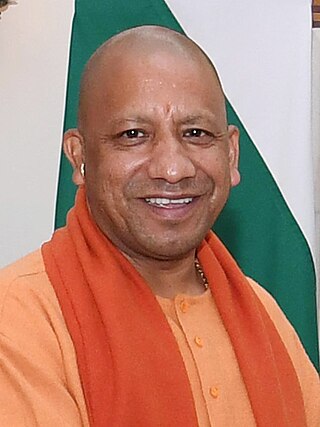
Legislative Assembly elections were held in Uttar Pradesh from 10 February to 7 March 2022 in seven phases to elect all 403 members for the 18th Uttar Pradesh Legislative Assembly. The votes were counted and the results were declared on 10 March 2022.
References
- ↑ "SVs liste i Larvik 2023". pollofpolls.no. Poll of Polls.
- ↑ "Partisekretærer". SV.no. Archived from the original on July 24, 2011. Retrieved February 21, 2010.